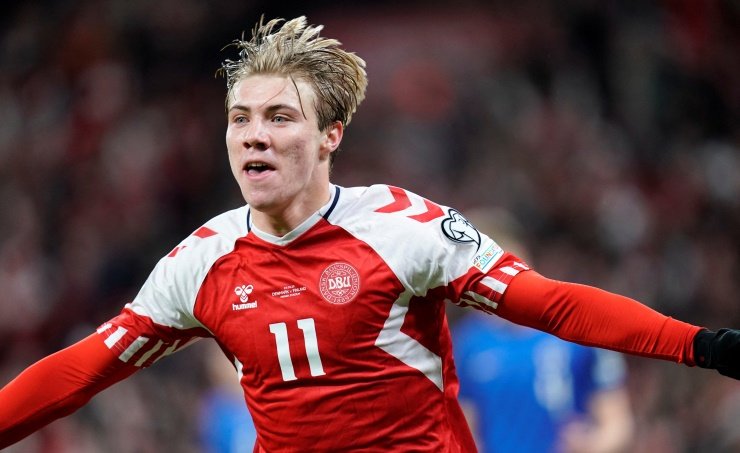Lionel Messi’s Impact? MLS Shatters Attendance Record with Over 11 Million Fans in 2024
The record-breaking milestone comes as the Major League Soccer (MLS) season heads toward completion, with 16 more games to be played by October 19.

Major League Soccer said on Monday that over 11 million fans had attended matches so far this season, shattering the previous record of 10.9 million in 2024. In a statement, the league announced that it has broken beyond the 11 million-fan threshold for the first time in its history, with an average of 23,240 people each game.
According to MLS, the introduction of global superstars like Lionel Messi, whose presence in the league has frequently forced teams to move their home games to larger venues, has contributed to an increase in attendance.
“The arrival of international stars and the work from clubs to create more unique fan friendly ticket packages and game day experiences are among the key drivers of the continued surge of record-breaking attendance across MLS,” the league stated.
With the regular season yet to go, the record-breaking total has been reached. There are sixteen more games scheduled before the season ends on October 19.
According to the attendance figures, Major League Soccer has attracted over 10 million spectators for three years running.
A Comprehensive Guide to Major League Soccer (MLS)
Major League Soccer (MLS) has grown into one of the fastest-expanding professional sports leagues in the world, with a unique combination of international talent and homegrown stars. Since its inception in 1996, the league has captured the hearts of soccer fans across North America and beyond. Here’s everything you need to know about MLS and its journey from a fledgling league to a global football phenomenon.
The Birth of MLS
MLS was established in 1993, but it didn’t kick off until 1996. The league’s formation was part of the United States’ successful bid to host the 1994 FIFA World Cup, with the aim of developing a professional soccer league in a country where football (soccer) was still gaining traction.
MLS began with 10 teams, and the league’s first game was played on April 6, 1996, between the San Jose Clash (now San Jose Earthquakes) and D.C. United. The match marked the beginning of a league that would grow to become a staple of American sports culture.
Format and Structure
MLS currently features 29 teams, including clubs from the United States and Canada. The league operates on a two-conference system: the Eastern Conference and the Western Conference. Each team plays a set number of matches in a season, facing opponents from both conferences.
The MLS season is divided into two parts: the regular season and the playoffs. The top teams from each conference qualify for the MLS Cup Playoffs, which culminate in the championship match known as the MLS Cup Final. This knockout format adds a thrilling dimension, where one-off games can decide a team’s entire season.
Unique Aspects of MLS
MLS differs from many other football leagues worldwide in a few key areas:
Designated Player Rule: Also known as the “David Beckham Rule,” this allows MLS clubs to sign star players without their entire salary being counted against the team’s salary cap. This rule has brought international stars like David Beckham, Zlatan Ibrahimović, Thierry Henry, and more recently, Lionel Messi to MLS.
Salary Cap: Unlike most major European leagues, MLS operates with a salary cap, designed to maintain a level of financial parity among teams. This has led to a more balanced league, where smaller clubs can still compete with more affluent franchises.
No Promotion or Relegation: MLS does not use the promotion and relegation system that is common in leagues across Europe. Instead, all teams remain in the league regardless of their performance each season. While this format is controversial among purists, it helps maintain financial stability for the league’s franchises.
The Growth of MLS
Over the past two decades, MLS has seen incredible growth in both its domestic and international appeal. Expansion has been a key part of its strategy, with teams like Atlanta United, LAFC, and Inter Miami contributing to the league’s rising popularity. Atlanta United, for example, broke multiple attendance records in its first few seasons, attracting over 70,000 fans per game.
The arrival of global football icon Lionel Messi in 2023 to Inter Miami further bolstered the league’s visibility on the global stage. Messi’s presence has drawn more fans to MLS, especially internationally, and helped bridge the gap between the North American league and Europe’s elite competitions.
Developing Homegrown Talent
While MLS has successfully attracted international stars, it has also placed a strong emphasis on developing homegrown talent. The league’s youth academies have produced standout players who have gone on to excel in MLS and other top leagues worldwide, such as Christian Pulisic, Tyler Adams, and Weston McKennie.
The league’s commitment to youth development has fostered a growing pool of American and Canadian players who are making a mark both domestically and internationally. This focus is critical for the continued growth of soccer in the U.S. and Canada, as MLS is seen as a key contributor to the success of the U.S. Men’s and Women’s National Teams.
The Future of MLS
As MLS continues to grow, its future looks bright. With more expansion teams planned, increasing international partnerships, and the growing popularity of soccer in North America, MLS is well-positioned to become one of the world’s premier football leagues.
Moreover, the 2026 FIFA World Cup, which will be co-hosted by the U.S., Canada, and Mexico, is expected to bring even more attention and investment to soccer in North America, further fueling the league’s growth.





